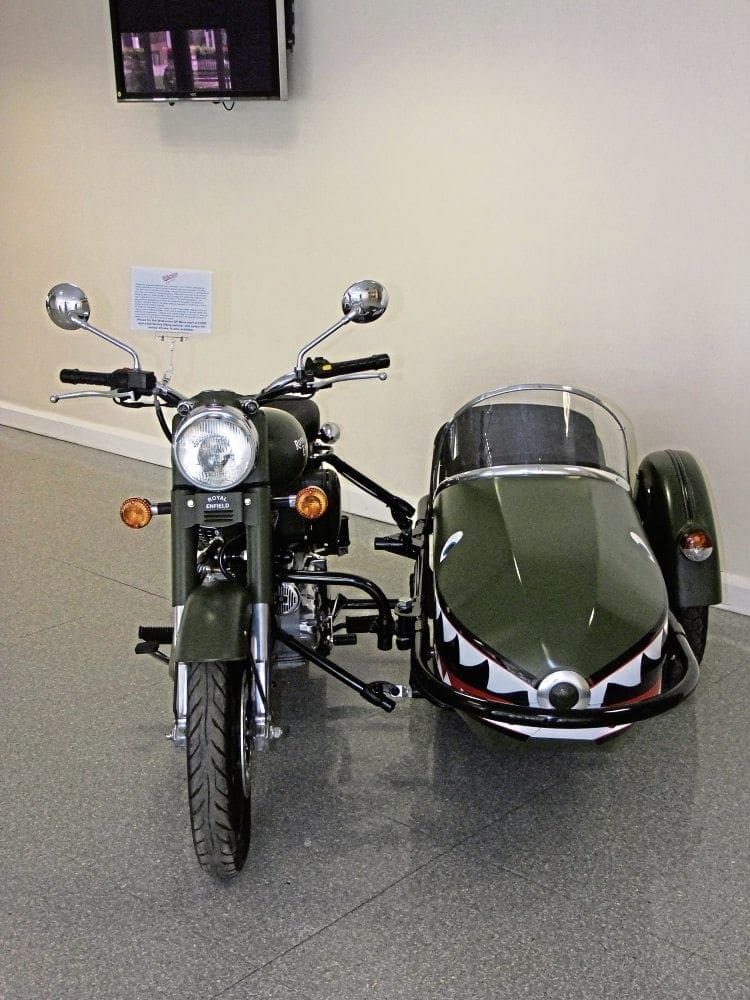Mick Payne returns to Watsonian Squire as he continues to question professional fitters about the important topic of sidecar alignment.
I think it was Keith Wash, of Unit Sidecars, who summed up alignment by telling me: “If you feel like you are sitting on one buttock more than the other, then the lean out is wrong.”
His reasoning was that sitting on a sidecar outfit should feel no different from sitting on a solo, and he was also adamant that neither arm should feel as if it’s doing the main part of the work.
Enjoy more Old Bike Mart reading every month.
Click here to subscribe & save.
“If one arm aches,” he said, “then something is amiss in the alignment stakes,” and I really thought about this when I rode into town to get the weekly shop and decided that there couldn’t be much wrong with my old Jawa. It really is that comfortable!
This is backed up by Ben at Watsonian Squire: “You could fit a sidecar with poor alignment but with the arms fitted well, and although (assuming the alignment wasn’t way out) it would be a pig to ride, generally speaking it would be safe.
“On the other hand, you could fit a sidecar with excellent alignment but with the arms in the wrong positions and it would be extremely dangerous! Understanding the technical side and the loads is way more important than alignment.”
He added: “Alignment is important and ensures the outfit handles as well as it can, however, the most important part of a sidecar fit is the position, angle and fitment of the correct arms.

“In our experience, many people who undertake ‘home fits’ have little or no understanding of the load paths through the sidecar arms. Over the years we’ve seen some shockingly dangerous fitting jobs, and sometimes we haven’t allowed visitors to ride away until we’ve rectified the situation.”
Jim D’Arcy reiterates Ben’s feel on the positions of the various arms, basing his opinions on a Triumph T140 with Mk.2 Monza.
“A good starting point is a lead of 11.25 inches and toe-in of 0.75in, measured immediately in front of and to the rear of the wheels,” he said.
He also stresses the need for perfect wheel bearings and the all-important triangulation of fittings, and raises an interesting point regarding Monza chassis.
“It is also important on a Monza with the chassis support that passes through the body at rear of seat that it is fitted and tight, and that the front body mount and integral fitting frame is not broken or loose. This isn’t a problem, though, on later or modified chassis with support tubes under the body and welded to the chassis.”

Jim isn’t too concerned about lean-out, however. “Lean-out for the majority of today’s roads – which have less camber than years ago – l do by eye, looking only at the wheels, and as long as the top of the wheel is angled slightly away from the sidecar, this will work in most situations.”
So there you have it – it appears that there are many ways of doing the same job, and if you want to give it a go yourself, then F2 Motorcycles’ simplysidecars.co.uk/fittingguide is a sound place to start.
If not, leave it to the professionals.
Team Katy will be on the road again this year with a trip to the Manx Grand Prix. The Steam Packet Company and Silly Moos Campsite have already helped with the crossing and camping, and I’ll have more in the next issue.

Read more News and Features at www.oldbikemart.co.uk and in the latest issue of Old Bike Mart – on sale now!




